What Grinds My Gears: Studded Snow Tires

Maybe the title should be “What Grates My Ears”, because there is no automotive sound that more predictably induces a spike of cortisol than the clatter of studded tires on pavement. As they steadily chew up the roads in Maritime western Washington and Oregon, where it snows once every couple of years or so, it’s also the sound of idiocy, greed and government’s inability to act on the obvious. That so few are allowed to create so much public damage, is truly mind boggling, especially as it results in little or no actual benefit to them. The conditions under which spikes offer some possible benefit (sheet ice) exist about 1% of the time. Even then, the actual improvement under those conditions is only 10%! And contrary to the popular myth, spikes offer little or no benefit on snow, and are materially worse on wet pavement, which of course is what it is most of the time on the west coast. And it’s not just the millions in dollars ($17 million per year in Washington alone) in damage alone that’s the problem; spikes make the roads much more dangerous for everyone, including the spikers.
It first hit me on one of my not infrequent I5 shuttles to Portland, on a rainy day a few years back. My car kept wanting to hydroplane, even though it was only raining very lightly. I suddenly realized that the grooves cut into the pavement from studded tires creates a continuous trough where water collects and sits. And the car wants to naturally stay in this trough, like being trapped in trolley tracks. How many accidents happen because if this highly dangerous situation?
The folks behind me may think I’m loony, but I now always drive to the extreme left or right side of the lane, depending which lane I’m in, even in dry weather. The roughness of the chewed up pavement dramatically reduces the ride quality and increases noise in a small light car like my xB. But it doesn’t do much for my seething anger at the inability of government to ban the damn things.
Many European countries, Japan, and some forward thinking states like Minnesota have. And guess what: studless drivers are still getting around just fine. And it’s not like the majority of the population in states like Washington and Oregon wouldn’t be more than happy to see them go, since the bulk of them live on the western (mild and wet) side of the mountains; its a few greedy representatives that like to go skiing on the eastern slopes that have held up repeated attempts at legislation.
How bad is the damage? Asphalt roads with average daily traffic volume (ADT) of 35k reach a rut threshold requiring repair after seven years. And concrete pavement with an ADT of 120k is shot after eight years. In Southern California, there are concrete freeway pavements that date back to the forties. The ironic thing is that passenger cars normally create almost immeasurable damage to roadways; it all comes from heavy trucks. But the spikes chew away at the pavement (and my ears) like little beavers.

More by Paul Niedermeyer
Latest Car Reviews
Read moreLatest Product Reviews
Read moreRecent Comments
- 3SpeedAutomatic I'd like to see a sedan:[list][*]boxy in shape, avoid the windshield at a 65º angle BS[/*][*]tall greenhouse, plenty of headroom to sit straight up in the back seat[/*][*]V8, true dual exhaust, sans turbo, gobs of torque[/*][*]rear wheel drive, fully independent suspension, accommodate a stretched wheel base (livery service would go nuts)[/*][*]distinctive, tasteful colors (black, navy blue, claret, etc.)[/*][*]more substance, less flash on dashboard[/*][*]limited 5 yr run, get it while you can before the EPA shuts you down[/*][/list]
- Bd2 Mark my words : Lexus Deathwatch Part 1, the T24 From Hell!
- Michael S6 Cadillac is beyond fixing because of lack of investment and uncompetitive products. The division and GM are essentially held afloat by mega size SUV (and pick up truck GM) that only domestic brainwashed population buys. Cadillac only hope was to leapfrog the competition in the luxury EV market but that turned out disastrously with the botches role out of the Lyriq which is now dead on arrival.
- BlackEldo I'm not sure the entire brand can be fixed, but maybe they should start with the C pillar on the CT5...
- Bd2 To sum up my comments and follow-up comments here backed by some data, perhaps Cadillac should look to the Genesis formula in order to secure a more competitive position in the market. Indeed, by using bespoke Rwd chassis, powertrains and interiors Genesis is selling neck and neck with Lexus while ATPs are 15 to 35% higher depending on the segment you are looking at. While Lexus can't sell Rwd sedans, Genesis is outpacing them 2.2 to 1. Genesis is an industry world changing success story, frankly Cadillac would be insane to not replicate it for themselves.



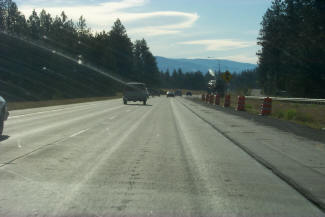
















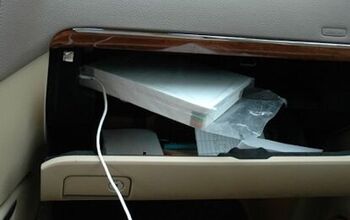
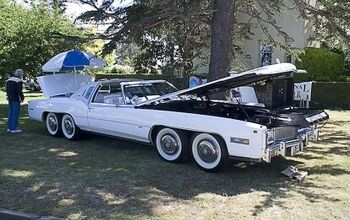
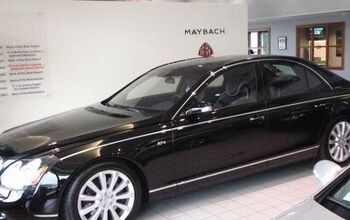
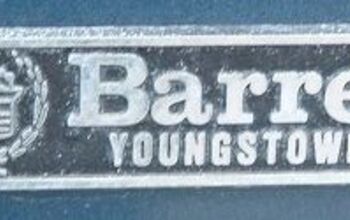










Comments
Join the conversation
Grew up in North Idaho, my parents still live there. We moved from Michigan and Indiana in the early 90s. Those states studs were outlawed way back in the day. Move there, we used all seasons before. Everyone says "gotta get studs" so my folks do. Snow tires are a good recommendation, where things are wet/slushy most of the time in the midwest due to salt use, up there, its compact snow with sand/gravel on top. Snows make a big difference. But my god, it didn't take long to realize that these things were incredibly noisy (think early 90s Japanese cars with them on), and the handling was spooky in anything but snow/ice. They wore them out, switched to the highest rated dedicated winter/snow tires, and the difference is astounding. Its quiet, the tires are just as good on anything but pure ice (is anything good on ice??), they handle and stop well, and they seem to last longer too. But I will agree they need to go. If you have that much snow (like I know Idaho does), chain up. Otherwise, you should see some of these grooves on I90 in Idaho and Spokane, WA.....there are places where you literally don't have to steer, its like riding train tracks. For those who talk safety in the ice, let me ask you how safe it is for the rest of us who have to put up with hydroplaning in the ruts....happens all times of the year, not just 1-2 times a winter like ice. And the spookiest is changing lanes where they're really awful, especially in the snow. You'll start going, nothing happens (you're stuck in the groove), then the car suddenly lurches out or across the grooves, providing a seriously spooky wiggle to the car. I've seen people go into the ditch when this happens. Of course, hydroplaning in the same situation is also possible. It just throws the car way off balance. And yes, the noise is much higher. It gets draining always going left or right of the ruts, then getting jerked around by them when you change lanes. Spokane Valley had a beautiful new concrete road surface put in I'd say maybe 7 years ago now (if my memory holds). Its already very worn, though not dangerous. When it first opened, it was like riding on air. So quiet, so smooth. Now, it hums and sends vibrations through the car. Roads that are not high quality concrete (say asphalt) I'd say need repair every few years. They need to go. Far far far far too little benefit for way way way way too much cost.
@ rpn453: Any study that found a currently available Bridgestone Blizzak tire as being unsafe on dry pavement, but found any studded tire to be fine on dry pavement, is extremely suspect to me. Years ago, I drove a relative's car with studded tires and hated every minute of it. Admittedly, that's very limited exposure to studded tires, and I never drove them on their intended surface. A friend of mine has run a variety of Blizzak tires for the past 15 years or so, has been quite happy with them, and has noted that the Blizzak line continues to improve. Personally, I've had Blizzak WS-50 (studless snow & ice) on a 2004 Accord, LM-25 on a 2006 Civic Si (winter performance), and WS-60 (superseded the WS-50) on a 2007 Fit. I found the WS-50 & WS-60 offered comparable snow & ice performance, but the WS-60 shows a definite improvement in noise and tramlining, to the point where it feels just like any other quality tire on dry and wet surfaces. The LM-25 compromises snow & ice capability for a sportier feel on dry pavement, but the WS-60 is so good, I'd pick it next time. The only way to get the WS-60 equipped Fit stuck is to severely high center it. It can claw its way through anything short of that, and it feels very planted most of the time. I'm willing to concede that a studded tire may offer some advantages in some conditions (water on ice, for example), but those conditions are far from the typical winter conditions the vast majority of people face. In 2007, TireRack found that a studded tire performed worse than the Blizzak WS-60 and two other studless tires. It's worth noting that the studded tire chewed up the ice, strongly suggesting to me that similar, cumulative damage would be incurred by concrete or asphalt surfaces. http://www.tirerack.com/tires/tests/testDisplay.jsp?ttid=94 Spinning carbide teeth are hard on pretty much everything, apparently including Japanese lungs. TireRack doesn't cite their sources about studs causing roadway rutting, but I have no reason to doubt them, as they'll happily sell you studded and studless tires. You'll note TireRack observed that "none of these 'studless' tires can totally equal a studded tire's traction on all types of ice." http://www.tirerack.com/winter/tech/techpage.jsp?techid=151 If I lived where conditions warranted using studded tires, I'd mount them on a second vehicle just for the times they were needed. Otherwise, I'd keep some tire cables or chains in my WS-60 equipped car and be happy that I wasn't needlessly tearing up roads, and that I could quickly adapt my car to the worst ice imaginable. I think that's a far more reasonable approach than what the roadchewers of Oregon are doing. Time to mount some new Michelin Primacy MXV4 tires on the Fit.